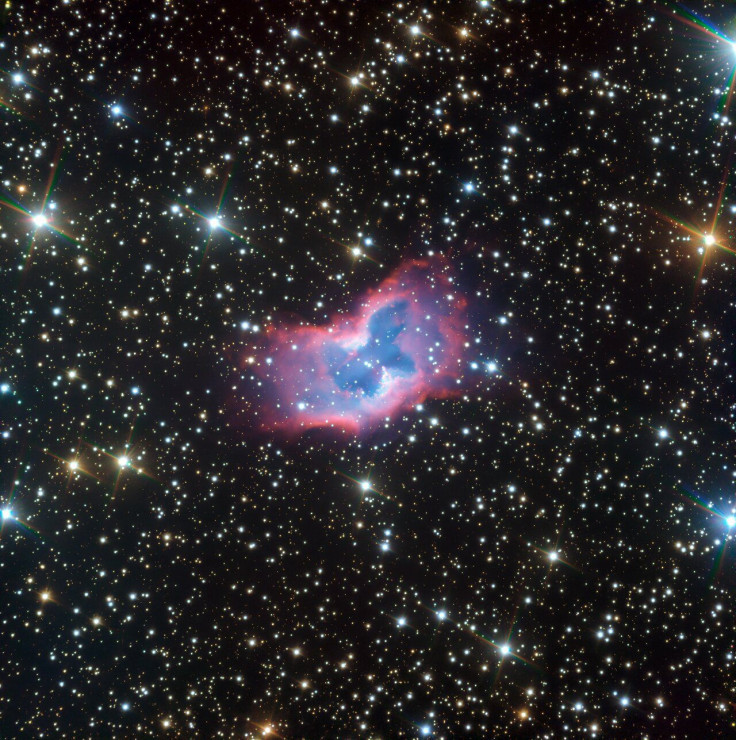Rare Nebula Resembling Giant Butterfly In Space Photographed By ESO Telescope
KEY POINTS
- The ESO captured a photo of a butterfly-shaped nebula
- NGC 2899's shape was formed by its central stars
- The nebula's colors were caused by the nebula's temperature
The European Southern Observatory (ESO) was able to capture a stunning photo of a planetary nebula that looks like a giant glowing butterfly in space. According to the organization, the nebula’s unique shape was formed by the interaction of a star and its dead companion.
The ESO identified the cosmic object in its image as NGC 2899, a planetary nebula located in the Vela constellation. It lies about 3,000 to 6,500 light-years from Earth’s neighborhood. The ESO captured NGC 2899’s image using its Very Large Telescope in Chile.
According to the ESO, the symmetric appearance of NGC 2899 was formed due to its two central stars. One of these stellar objects died and began to shed off its outer layers. The stellar winds from the other star, however, interfered with the emissions of the dead star. This interaction formed the two lobe-shaped structures of the nebula, making it look like a massive butterfly in space.
“After one star reached the end of its life and cast off its outer layers, the other star now interferes with the flow of gas, forming the two-lobed shape seen here. Only about 10–20% of planetary nebulae display this type of bipolar shape,” the ESO explained in a statement.
Aside from its distinct shape, NGC 2899 is also characterized by its unique color pattern. According to the ESO, the planetary nebula’s striking colors were caused by the cosmic structures’ extreme temperatures.
The observatory explained that NGC 2899’s high temperature is caused by the radiation coming from one of the nebula’s central stars. The stellar emission causes the clouds of gas within the nebula to reach temperatures of over 10,000 degrees Celsius. This causes the main structure of the nebula to glow in a reddish or pinkish color. On the other hand, the center of the nebula, which is filled with oxygen, appears blue in ESO’s photo.
“NGC 2899’s vast swathes of gas extend up to a maximum of two light-years from its center, glowing brightly in front of the stars of the Milky Way as the gas reaches temperatures upwards of ten thousand degrees,” the ESO explained. “The high temperatures are due to the large amount of radiation from the nebula’s parent star, which causes the hydrogen gas in the nebula to glow in a reddish halo around the oxygen gas, in blue.”

© Copyright IBTimes 2024. All rights reserved.





















